Technology-Driven Readiness with Mississippi State Highway Patrol
Available in:
EN
David Saucier, Research Engineer with Mississippi State University’s Athlete Engineering Institute, is working with the Mississippi Highway Patrol (MHP) to support cadet health and performance.
Each year, cadets entering the MHP Academy face a demanding 18-week program – physically, mentally and emotionally. To help more cadets complete it successfully, Saucier and his team have partnered with MHP to introduce a new approach to physical preparation and injury risk management.
By integrating VALD technology into their assessment protocols, the project aims to better understand the physical demands placed on cadets and support them in navigating those demands more effectively.
We sat down with David to explore how the project came to life, what they’re measuring and what early insights are already making a difference.
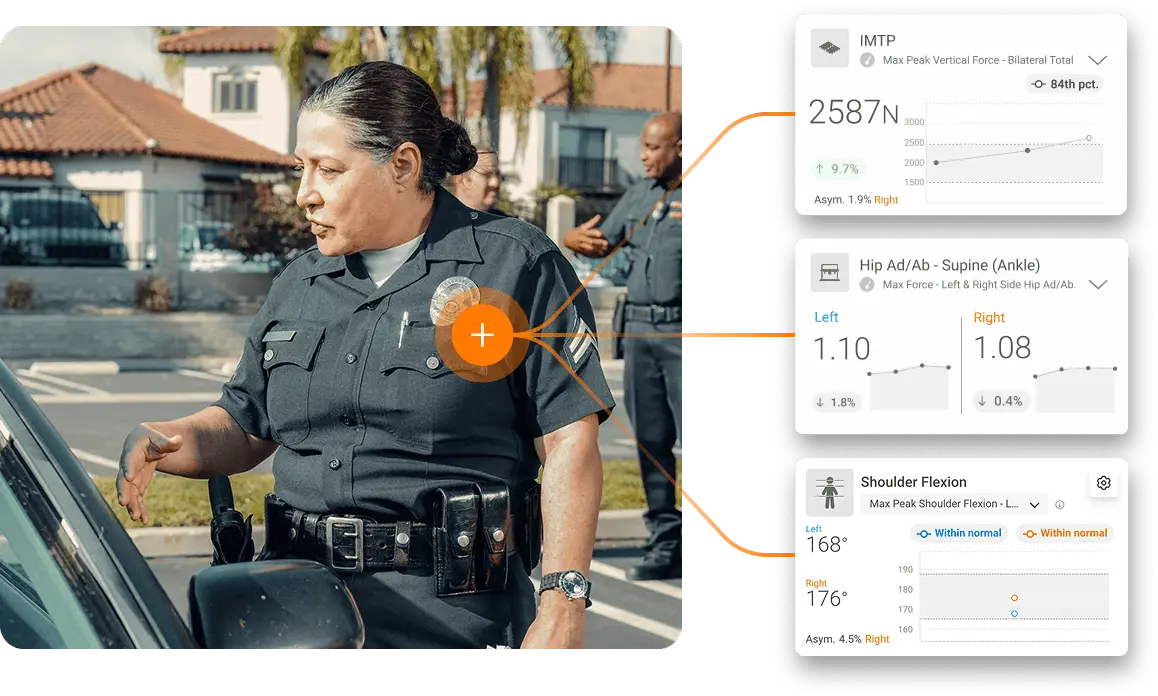
MHP cadet in training with performance characteristics from VALD Hub.
What’s the overarching goal of this project with MHP?
We’re trying to answer one key question: Can we use VALD’s equipment to identify injury risk indicators at scale? That means building a battery of assessments that highlight where cadets may be vulnerable from a range of motion (ROM) or strength standpoint – and using that information to guide targeted interventions.
…the goal is to improve training success rates and reduce the risk of injury, especially in areas that have historically caused problems for cadets.
Ultimately, the goal is to improve training success rates and reduce the risk of injury, especially in areas that have historically caused problems for cadets.
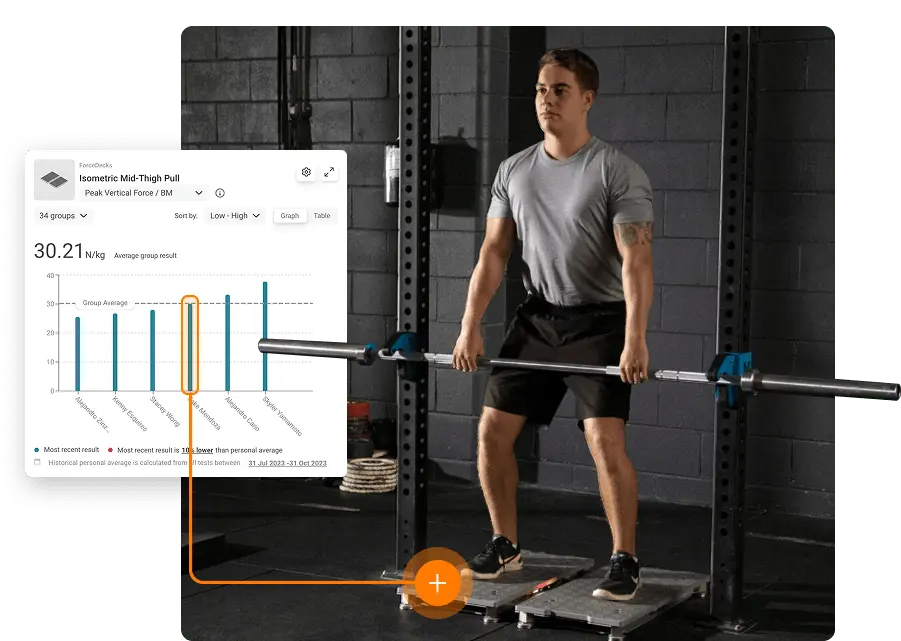
Group monitoring dashboard in VALD Hub, comparing normalized strength among cadets.
What specific challenges are you trying to solve?
There are two big ones. First, female cadet dropout rates. Very few women complete the program, and a lot of that ties back to training styles that don’t account for differences in body composition or joint stress – especially at the hips. We’re hoping that by using tools such as ForceFrame and HumanTrak, we can both measure and provide better support for them.
Very few women complete the program… We’re hoping tools such as ForceFrame and HumanTrak can help measure and provide better support for them.
Historically, 50% of cadets drop out within the first month, with only around 30-40% making it to the end. Not all of that is injury – some of it’s mental health, some of it’s lifestyle-related – but we’re doing what we can to address the physical component.
Second, we’re seeing a high prevalence of lumbar spine injuries, especially among serving troopers who spend a lot of time sitting in vehicles. We want to identify those issues early and provide more education around core stability and functional strength – not just the “mirror muscles.”
What does your assessment protocol look like?
We assess cadets in small groups using four core VALD systems:
| Quality | Assessment | System |
| Upper Body ROM | HumanTrak | |
| Lower Body Neuromuscular Control | HumanTrak | |
| Lower Body Power | ForceDecks | |
| Lower Body Strength | ForceDecks | |
| ForceFrame | ||
| Upper Body Strength | ForceFrame | |
| DynaMo |
Everything is streamlined through station-based testing. Once data is collected, we export it to a centralized location and visualize it, filtered to suit MHP’s needs.
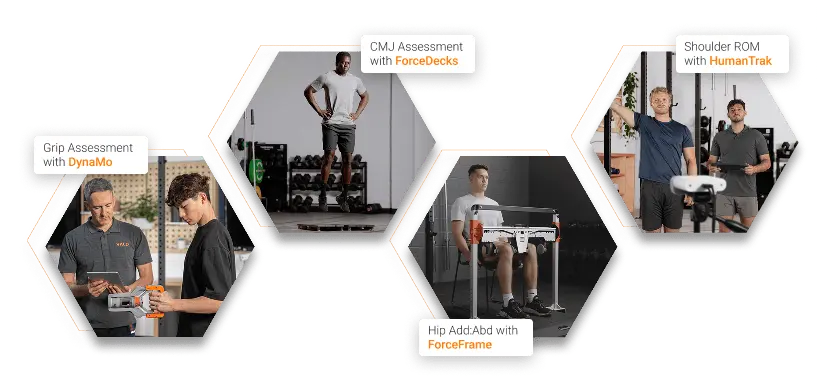
Different performance assessments performed by MHP to monitor cadet safety and performance.
How are you interpreting the results?
We’ve kept the analysis simple and practical. We categorize cadets into one of four archetypes based on their needs:
- Shoulder-focused plan – flagged by significant asymmetry (>15-20%) in shoulder ROM and strength metrics
- Hip-focused plan – driven by strength asymmetries or prior risk identified in female cadets
- Knee mechanics plan – based on landing asymmetries from jump assessments
- Core/spine-focused plan – given to those without red flags as a general recommendation
We categorize cadets into one of four archetypes… this approach helps us tailor interventions where they’re most needed.
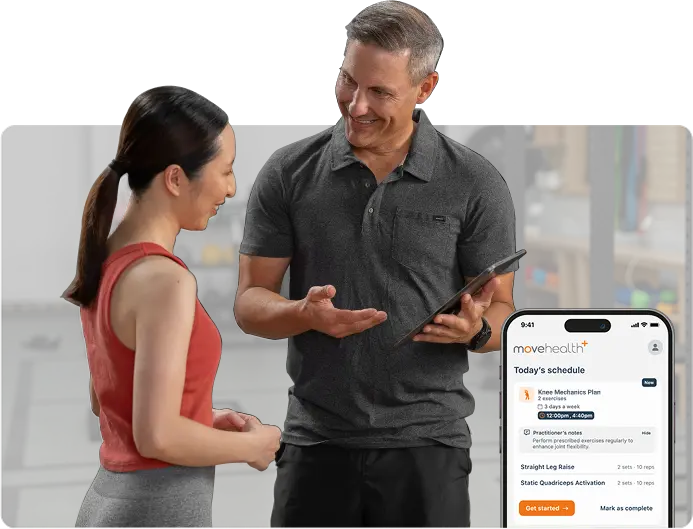
MHP practitioners train cadets on how to execute specific programs built in MoveHealth that are most appropriate for performance.
We’re not customizing plans for every individual – the scale doesn’t allow it – but this approach helps us tailor interventions where they’re most needed.
How have you been delivering those plans?
MoveHealth has been part of our ongoing strategy, particularly for off-day training. Compliance has always been a challenge in this environment – cadets are busy, stressed and sometimes overwhelmed. We’re working on simplifying that process to boost adherence, because we strongly believe in its potential to drive long-term benefits.
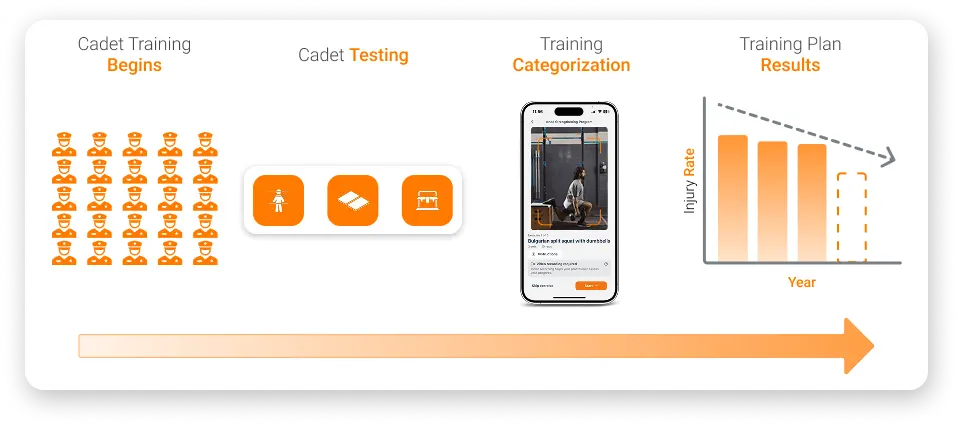
Visualized process of cadet evaluation sequence.
Cadets also have access to their testing results through the MoveHealth app. This allows them to better understand where they rank amongst their peers and allows us to spark conversations about why we’re initiating the program.
That educational piece is key – if cadets know the “why,” they’re far more likely to buy in.
[The] educational piece is key – if cadets know the “why,” they’re far more likely to buy in.
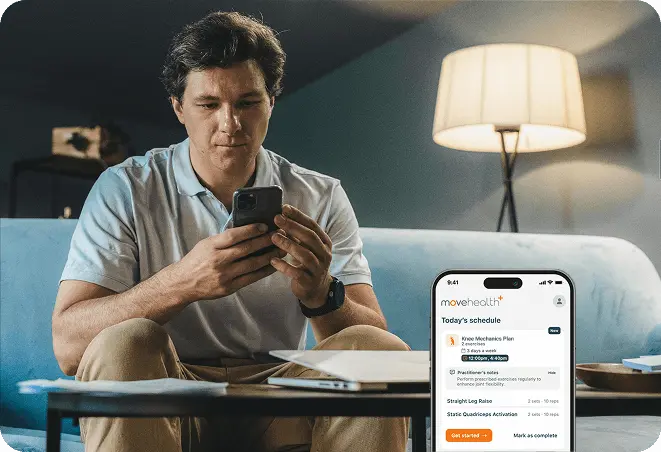
Cadets monitor their performance remotely via the MoveHealth app.
What sort of changes are you seeing so far?
Early feedback has been encouraging. We’ve seen an increase in injury disclosure upfront, which is a significant win. The department also reported a general reduction in workers’ compensation claims, though we are still gathering formal data on this.
One of the biggest wins is cultural – shifting cadets’ mindsets from “just survive the training” to “optimize your performance and readiness.”
One of the biggest wins is cultural – shifting cadets’ mindsets from “just survive the training” to “optimize your performance and readiness.” That mindset shift is invaluable.
What’s next?
We’re still refining the process, especially regarding behavior change and post-assessment engagement. However, this is already developing into a strong model for tactical performance – not just reacting to injuries but proactively identifying and managing risk using objective data.
Want to learn more about how VALD technology supports law enforcement, military and tactical operators? Reach out to our team today.
